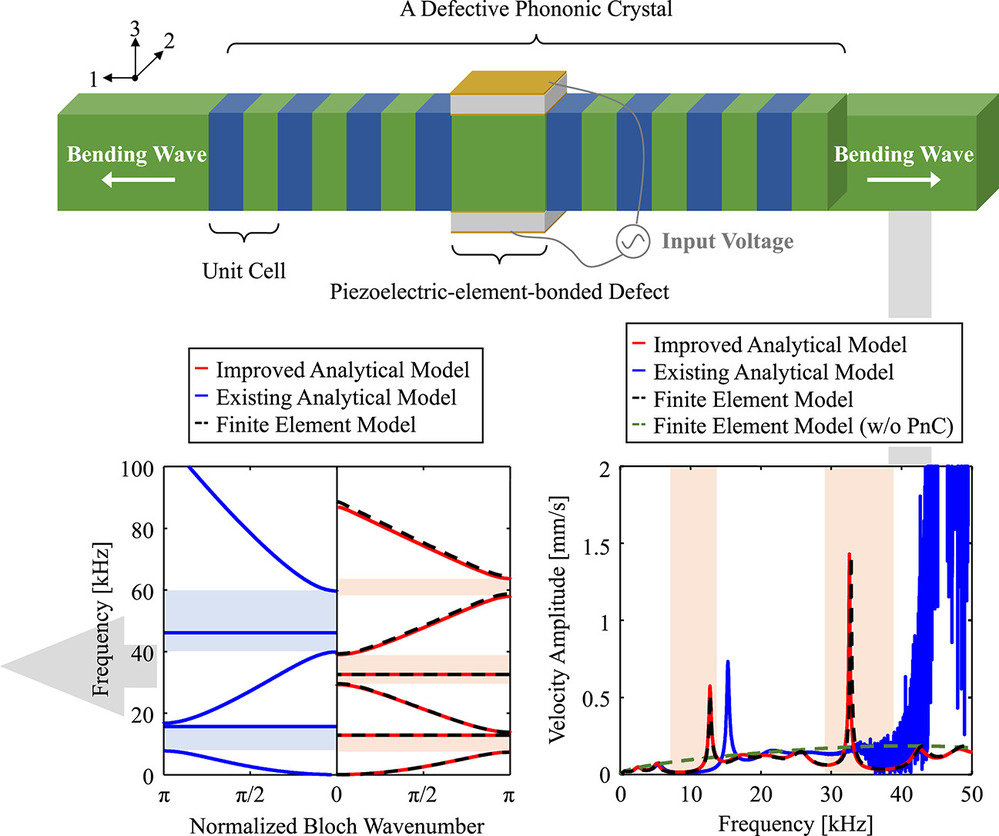2024 An Improved Analytical Model of a Thick Defective Phononic Crystal for Bending Wave Excitation
본문
- Journal
- International Journal of Mechanical Sciences
- Date
- 2024-02
- Citation Index
- SCIE (IF: 9.4, Rank: 2.5%)
- Vol./ Page
- Vol. 264, pp. 108822
- Year
- 2024
- Link
- http://doi.org/10.1016/j.ijmecsci.2023.108822 493회 연결

Abstract
This research aims to advance the existing analytical model, which was based on the Euler–Bernoulli beam theory, for predicting the velocity amplitude of bending waves excited while amplified by defective phononic crystals (PnCs) with piezoelectric elements. The previous analytical model falls short for thick defective PnCs and is limited to low frequencies. Hence, the Timoshenko beam theory is newly incorporated to address these issues, considering shear deformations and rotational inertia. Its performance is validated against a finite element model. It confirms that the proposed analytical model outperforms its predecessor, which was suitable for thin defective PnCs with a slenderness ratio above 10 and frequencies around 2 kHz. Remarkably, the improved analytical model demonstrates excellent predictive capabilities up to 40 kHz for thick defective PnCs with a slenderness ratio of around 2.5. With a relative error of less than 1% compared to the finite element model, this advanced approach also demonstrates time-efficient and stable computational performance. This work introduces three contributions. First, it pioneers the proposal of an electromechanically coupled analytical model for predicting the performance of defect-mode-enabled bending wave excitation. Second, this enhanced analytical model surpasses existing counterparts in terms of both accuracy and computational stability, particularly for thick defective PnCs, even at high frequencies. Last, the analytical model dramatically reduces the computation time.
